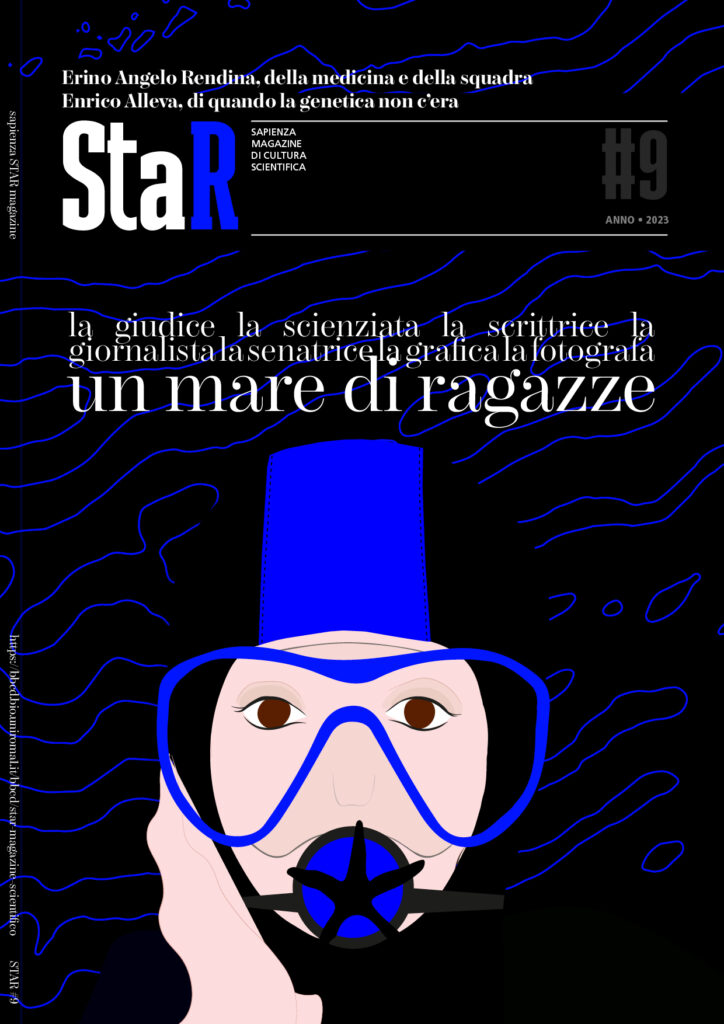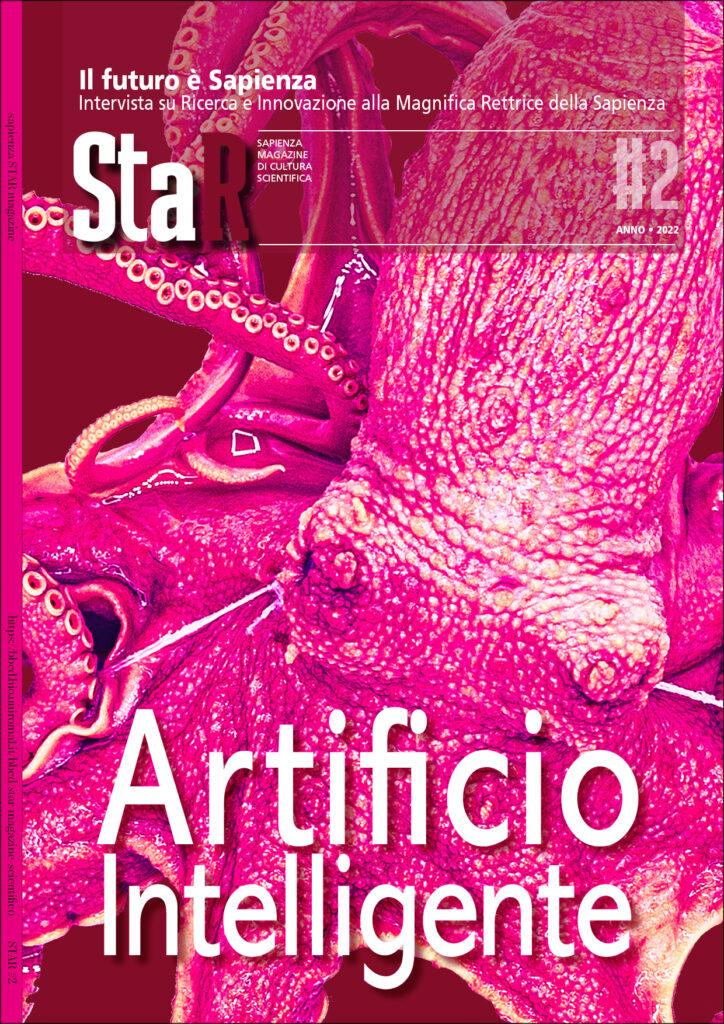
Telo-Prize – Interview with Daniela Bargellini Rhodes
By Emilio Giovenale
Emilio Giovenale, ENEA Researcher, having just concluded his experience at the Master “Science in Journalistic Practice”, interviewed Daniela Bargellini Rhodes, an international scientist and crystallographer who had just won a prestigious prize awarded to her by the WLA (World Laureate Association)
Emilio: Good afternoon prof. Rhodes,
First of all, we’d like to congratulate you on your recent important prize: the World Laureate Association Prize, awarded to you in the category “Life Science or Medicine,” with the motivation: “For elucidating the structure of the nucleosome at the atomic level, providing the basis for understanding chromatin, gene regulation, and epigenetics.” Could you explain what the World Laureate Association is and why this prize, established in 2021, is becoming increasingly important in the international scientific panorama?
Daniela Rhodes: The World Laureate Association (WLA) is quite new – was funded in 2017. It was initiated by Roger Kornberg and includes, as members, Nobel Prize winners, Field Medal winners, Turing Award and other important prize winners. It’s funded by a Chinse investment company by about 150 million dollars. It is probably the world biggest organization made up of Nobel Prize winners. This gives it a lot of respectability.
So WLA is a very prestigious organization and they first started by having World Forums, from 2017 in China, in Shanghai and awarding the WLA Prize since 2021. Collecting up to 25-30 Nobel Prize winner in this WLA World Forum. The objective of the World Forum is to promote science among young scientists and the community. So, they are wonderful meetings. And actually, the WLA Prize is given during one of these world forums.
The WLA winners and other eminent scientists participate in the World Forum by presenting their work and through discussion group, such as how to have a career in science or women in science, technology advances and so on. I was very impressed, having participated in this in 2023
Emilio: OK… I’ve perused your impressive curriculum and I must confess that it’s difficult to decide which of your many research areas deserves special attention: it seems you’ve made significant contributions in numerous areas of Molecular Biology. One of the most intriguing topics, that can captivate the interest of the non-specialized public, is the study of telomers, given their involvement in the ageing process and their role in protecting against cancer. Could you explain, in simple terms, what are telomers, and why are they crucial for such functions? Also, why you decided to delve into this topic?
Daniela Rhodes: Viruses have circular genomes so they don’t need to protect their genome, whereas we humans and many other species have linear chromosomes. The tips of linear chromosomes need to be protected from DNA damage. This protecting, or capping, structure was discovered in the late 1930’s first in flies by Herman Muller and then in corn by Barbara McClintock. Barbara, working with maize realized that chromosomes had to be capped, otherwise you’d get chromosome fusions.
The molecular biology age of telomeres started when Liz Blackburn was able to sequence the telomeres of the ciliate Tetrahymena. She established that telomeres contain unique repeated DNA sequences. At that point, it had already been proposed by Jim Watson (ndr. James Dewey Watson, the Nobel prize winner) that since, on each cell division, when DNA is replicated, you lose some of the DNA at the chromosomal ends, there must be a reverse transcriptase activity working to repair telomeric ends. Blackburn used the knowledge of the DNA sequences to fish out the RNA component of this reverse transcriptase (the telomerase), for which she was awarded the Nobel Prize. And then from simple organisms, scientists went to yeast and eventually to mammals.
It is fascinating that telomeres from simple organisms to humans are made up simple G-rich repeat. In humans this sequence is TTAGGG repeated for 10,000 base pairs. This prompted questions about what proteins bind to these unique sequences to form the telomeric capping structure, and that’s when I became involved in the field, really by accident.
Initially, I had been working in the early days of chromatin, crystallizing the nucleosome core (discovered by Roger Kornberg) for the first time in 1976. It is for this work I was awarded the WLA prize. Subsequently I worked on DNA- binding proteins such as zinc fingers. They were discovered by my great mentor, Aaron Klug. But I wanted to return to chromatin because I wanted a clearer understanding of how chromatin functions.
Since chromatin packages DNA in chromosomes, it must be involved in all cellular processes whose substrate is DNA. Because DNA is packaged up, it must then become accessible at specific time when it needs to be replicated or transcribed, and so on. I was working on a yeast protein called RAP1 (Repressor Activator Protein 1), which appeared to be a transcription factor but was also involved in silencing in yeast. I thought, maybe this is a way into understanding how gene expression is regulated.
During a sabbatical with Susan Gasser in Lausanne at the Swiss Cancer Research Institute, it emerged that this RAP1 protein was actually the major telomere-binding protein in budding yeast. So, then it became clear that if I’m going to work on RAP1, clearly the way to go is to work at telomeres”. Soon after it started to emerge that genes that are located near telomeres are, more repressed than genes inside the chromosomes.
So that’s how I got into it. Not by vision, but really by trying to work on something else and then realized that working on telomeres was interesting. Finally, doing structural biology of telomeres to understand function was also obvious to me because prior to that, I had worked on the three-dimensional structure of transcription factor such as the estrogen receptors that regulate gene – expression by binding to specific DNA elements. Therefore, I started researching the proteins that bind to telomeric repeats and transitioned from yeast to humans. Eventually, with Titia de Lange we determined the first structures of human telomeric proteins.
Emilio: Your scientific career is an inspiration for young women entering this field. What are your thoughts on the situation of women in the world of research today?
Daniela Rhodes: Whilst I was member of the European Molecular Biology Organization (EMBO) Council, we organized one of the first meeting on “The Glass Ceiling for Women in Science”. So, I’m very aware of the situation of women in science. I think that the situation is getting better, but one problem is that women have often been evaluated using a male yardstick. Women themselves may also be biased. When we think of someone who is successful, we associate that with male traits such as being assertive, self-assured and so on. Even women, when praising someone as “good,” tend to use male traits as a reference. First and foremost, we need to change the yardstick.
When I was on EMBO fellowship committee, about 50% of the applicants were female. Yet, year after year, the success rate for females was slower than that for males. So, we asked ourselves: Why? Interestingly what emerged from the study is that women are much better at collaborating, and hence have fewer first author papers!
However, there is still a difference, and biases come into play in the evaluation of women and their research. We should consider that the reality is that women have only been able to graduate from universities relatively recently. I was at Cambridge for 40 years, and women could only graduate from starting in 1947. I was born in 1946. So, men in England have had 800 years of education, which means the pool of male graduates is much larger than that of females.
In biology and medicine this is now changing. It’s becoming a 50/50 split, but I believe it will take time. Sometimes, the impatience of women doesn’t necessarily help them. I think as women, we should come together and ensure that systems are fair in terms of promotions or appointments. One good way to do this is to ensure that there are enough women on committees and in decision-making positions. There is also little point in sitting in a corner complaining; instead, come up with positive proposals. For instance, a large employer like “La Sapienza” should provide childcare facilities on campus. That would help not only women but also men employed by the university.
So we are on the right path, but it will take some more time and effort.
Emilio: You have had experiences in research in different countries around the world. Can you share your observations regarding the differences you noticed in these countries?
Daniela Rhodes: Well, I haven’t so much experience: I was the MRC Laboratory of Molecular Biology (MRC-LMB) in Cambridge for 40 years – a unique place in research! The MRC-LMB is an institute centrally funded by the British Medical Research Council. So, we didn’t need to apply for grants. This institute was set up, after Second World War, by an immigrant to England, called Max Perutz. And it was the first institute in the world with the terms “molecular biology” in its name. Max had the ability of recruiting talented people, you know, stars! And in those days the people recruited were primarily physicists or chemists: there wasn’t a subject called “molecular biology”. So, Francis Crick was a physicist, Aaron Klug, who was my great mentor, was a physicist, Frederick Sanger, who got two Nobel prices, was a chemist…
It was a place where we didn’t use titles and there was an “open door” policy. And everybody, from the cleaning lady to the director, was on first terms. Groups were small, because the idea was that the group leaders stay working at the bench. And Max Perutz himself submitted his last papers when he was 89, and he died like 6 weeks later. He got the Nobel Prize in 1962 but continued working at the bench for another 30 years.
And there was no hierarchy. All that counted was the quality of your work and ideas. Everybody went to group meetings, from the most junior student and technician, and people had to present their work, stand up and talk about what they had done. And, so of course it’s utopia, but the outcome of that is that the Laboratory of Molecular Biology has 13 Nobel Prize winners, and that’s counting only the work that was done in the Institute. If you count people who have been through the MRC – LMB in Cambridge, you have another 10 Nobel Prize winners. Roger Kornberg was the postdoc at the LMB, Liz Blackburn was a graduate student at the LMB. Sydney Altman was postdoc at the LMB… I can go on …
So is surprising that no more governments and institutions have figured out that to get great science done, you have to give the scientists, the researchers, the freedom to do their best work.
Emilio: What would you suggest to young scientists working in this field?
Daniela Rhodes: Well, only do it if you’re really passionate about science. And be curious, try to stay curious. Nowadays research is so driven by technology. In our days, it was mostly hypothesis driven.. Nowadays is more mass science, but still you should never lose track of what it is that you are doing. And you should do science, thinking that the question you’re asking is really important and trying to find the answer to it.
Another suggestion is educate yourself. I find young people nowadays don’t read broadly enough, because there is so much stuff published. I my days we couldn’t see it online, but I remember organizing my work… I would set up an experiment, and then run to the library to see the latest issue of Nature. Journals like that are quite broad. So that you can become educated in various areas.
I used to be director of studies at the LMB for some years. After students completed their PhD, we would ask them: “If you had the chance, which lab would you like to work in or what project would you like to work on?” Aim high, have a dream at least! Challenge yourself to gain broader experiences. In today’s world, you might be a molecular biologist, but you certainly need to know computational methods or do structural biology, among other things. Strive to broaden your skill set as much as possible because it will give you more freedom to answer important questions and find solutions.
Emilio: Would you like to mention someone who had a significant impact on your scientific career?
Daniela Rhodes: Certainly, that would be Aaron Klug. Aaron allowed me to understand how to think about science He gave me my first job as a technician. I had never been interviewed for a job before as I had just graduated when I moved to Cambridge from Sweden. He asked to see what I had done in college, my notes… And then he asked me: what do you think was the most interested subject that you did? I was doing chemical engineering, which was quite applied because I went to a highly technical school …. And I said “physical chemistry” and I think that sealed it. I didn’t know he was a physicist.
Once I was in the lab, I didn’t know how to do anything! But because of such an open-door policy, you could go to your neighbour and ask: “how do I do this or how do I use this for simple things like instruments and so on. And in fact, the fact that Aaron was a physicist, sat in his office and had great thought and had never touched a test tube, did work to my advantage because sort of I became “his hands”.
And I shared the lab for many years also with Max Perutz, the director of the lab. He had created this amazing place. The purpose of the lab was to work on important and difficult problems in molecular biology, because we were centrally funded. So, we didn’t have to be productive to get the next grant. This vision: everybody involved, no hierarchy, no closed door… whenever Max went to the canteen to have lunch, he would look around the room, and find a group of young people and go and sit with them. And he would asked: “what are you working on?”
I was sent early on to conferences across the world. I remember going to my first conferences very shy, standing at the back of a room full of men in suits. And then after a while I thought, why are they working on such boring stuff? Because I thought the whole world worked on really important problems. I was in a corridor, where we had Max Perutz who got the Nobel Prize for the structure of Haemoglobin in 1962 and downstairs was Francis Crick who had been Max Perutz student and John Kendrew was his postdoc… in 1962 there were 2 Nobel Prizes one to Watson and Crick, and one to Kendrew and Perutz.
Aaron was a small man, but his “shadow” was long. But I didn’t care whether people thought it was my work or his ideas, I just enjoyed and I continued talking to him when I had an independent position, simply because he was the most interesting person to talk to. At some point our interests diverged. He stayed with zinc fingers… and I went on to telomeres.
Daniela Bargellini Rhodes, Structural and Molecular Biologist, Cambridge Molecular Biology Laboratory
More info (in Italian) Italian version


















Commenti recenti